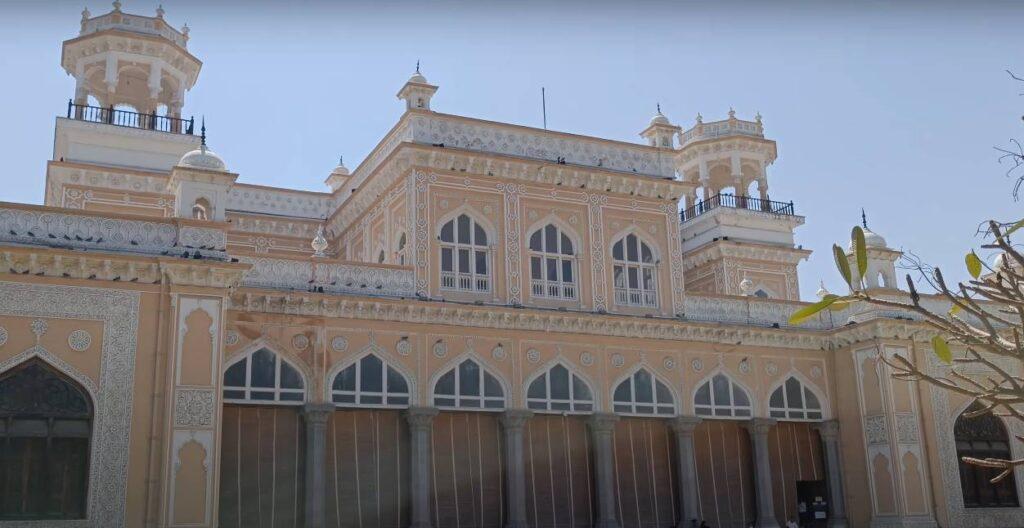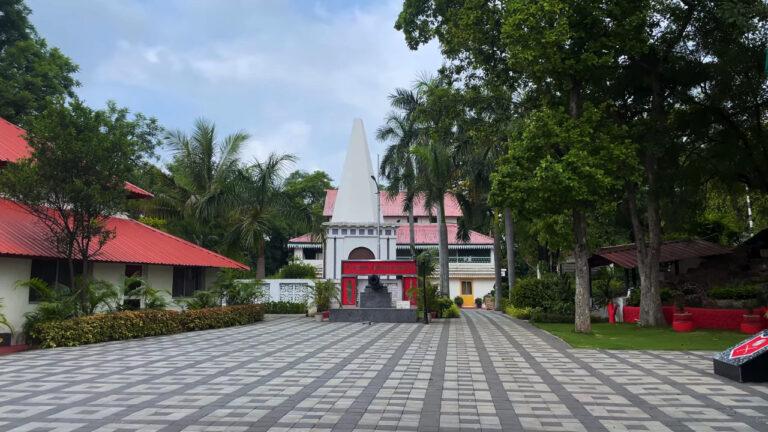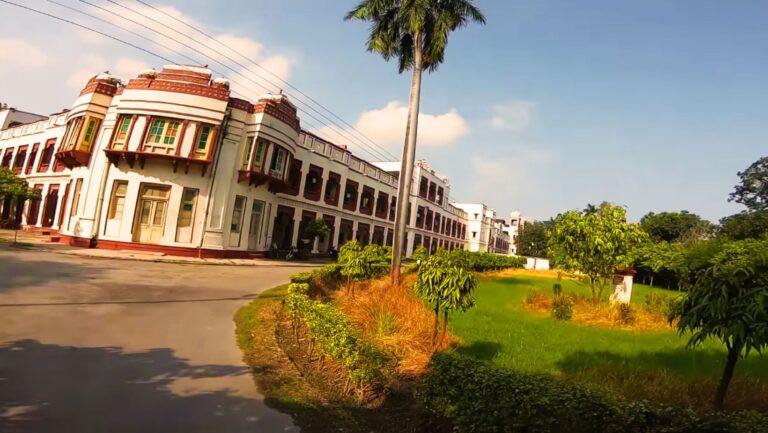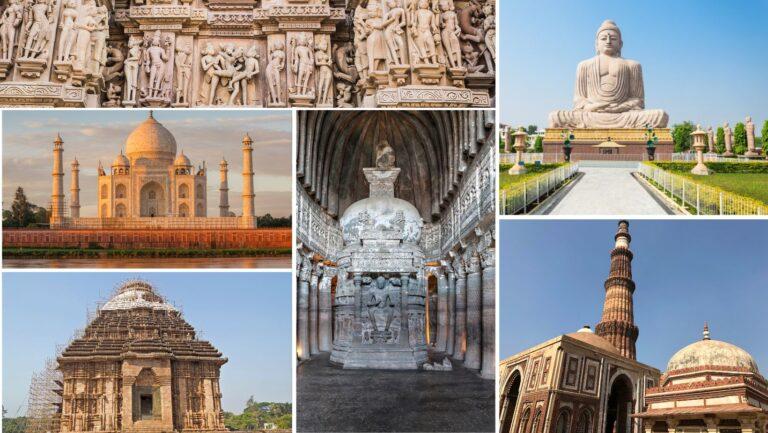Chowmahalla Palace is a magnificent complex of palaces and buildings that was once the royal residence of the Nizams of Hyderabad, the rulers of the largest princely state in India. The name Chowmahalla means “four palaces” in Urdu, and refers to the four grand palaces that are situated in the southern courtyard of the palace complex.
The palace also has a northern courtyard that contains two more buildings, as well as a central hall that was used for ceremonial and official purposes. The Chowmahalla Palace is a splendid example of the fusion of various architectural styles and influences, such as Persian, Turkish, Mughal, Rajasthani, and European. The palace is also home to a rich collection of artifacts, paintings, furniture, chandeliers, carpets, and vintage cars that showcase the opulence and culture of the Nizams.
The purpose of this article is to explore the history, tickets, hours, and how to visit Chowmahalla Palace, one of the most fascinating and beautiful attractions in Hyderabad.
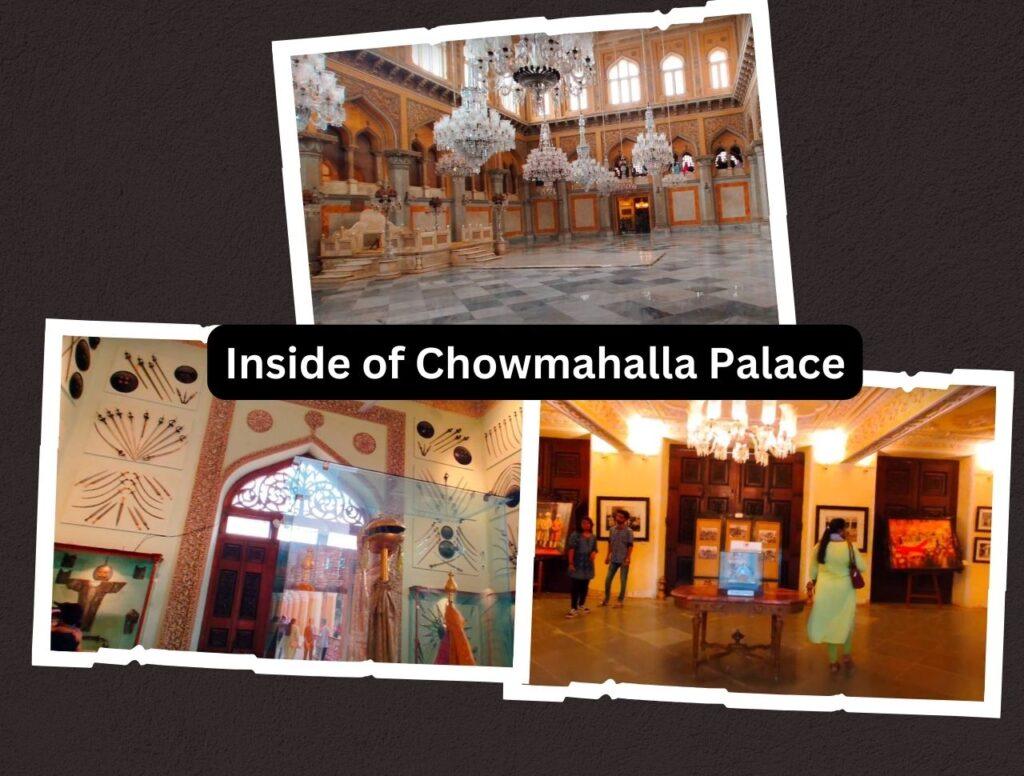
History of Chowmahalla Palace
The Nizams of Hyderabad and the Asaf Jahi Dynasty
The history of Chowmahalla Palace is intrinsically tied to the Asaf Jahi dynasty, which ruled Hyderabad from 1720 to 1948. The Nizams, known for their immense wealth and patronage of arts, architecture, and science, were among the richest rulers in the world during their reign. Their contributions to Hyderabad’s cultural and architectural landscape, including landmarks like the Chowmahalla and Falaknuma Palaces, continue to define the city’s identity.
The construction of Chowmahalla Palace began in 1750 under Nizam Salabat Jung, the fourth Nizam of Hyderabad. However, the palace as it stands today was largely completed between 1857 and 1869 during the reign of Afzal ad-Dawlah, Asaf Jah V. The palace was envisioned as a grand residence and the seat of power, where the Nizams conducted official ceremonies, held durbars (royal courts), and hosted dignitaries, including British Governor-Generals.
Originally spanning 45 acres, the palace complex extended from Laad Bazaar in the north to Aspan Chowk Road in the south. Over time, urban development reduced its footprint to 12 acres, but its grandeur remains undiminished. The palace is still owned by Barkat Ali Khan Mukarram Jah, the titular Nizam and heir to the Asaf Jahi dynasty.
Restoration and Public Access
By the late 20th century, Chowmahalla Palace had fallen into disrepair after years of disuse. In 2000, Princess Esra Birgen, the wife of Prince Mukarram Jah, spearheaded a meticulous restoration project to revive the palace’s former glory. The decade-long effort involved traditional craftsmen, conservation architects, and techniques to stabilize structures, restore intricate architectural features, and transform the palace into a public museum. The restoration was divided into three phases:
- Mapping and Planning: Detailed surveys and conservation plans were developed to assess the palace’s condition and potential for reuse.
- Stabilization: Urgent repairs, such as waterproofing and structural reinforcement, prevented further deterioration.
- Restoration and Reuse: The palace was restored to its original splendor, with modern amenities added to facilitate public access.
In January 2005, Chowmahalla Palace opened to the public, allowing visitors to explore its rich history and architectural beauty. The restoration efforts earned the palace the UNESCO Asia Pacific Merit Award in 2010, recognizing its significance as a cultural heritage site.
Cultural Significance
Chowmahalla Palace is more than a historical monument; it is a living symbol of Hyderabad’s royal heritage. It served as the venue for significant events, including the accession ceremonies of the Nizams, royal weddings, and lavish durbars. The palace’s Durbar Hall, known as Khilwat Mubarak, was the heart of these ceremonies, where the Nizam’s royal seat, the Takht-e-Nishan, was placed. The palace also hosted cultural events, reflecting the Nizams’ patronage of music, dance, and literature.
Today, the palace continues to be a cultural hub, hosting events like the Chowmahalla Music and Dance Festival and the Chowmahalla Art Festival, which celebrate Hyderabad’s artistic traditions. Its role as a venue for exhibitions, concerts, and film shoots underscores its relevance in bridging the past with the present.
Architectural Marvels Chowmahalla Palace
Chowmahalla Palace is a stunning example of architectural synthesis, blending Persian, Mughal, Indo-Saracenic, Rajasthani, and European styles. Modeled after the Sa’dabad Complex (Shah’s Palace) in Tehran, Iran, the palace’s design reflects the cosmopolitan ethos of the Nizams, who drew inspiration from global architectural traditions.
Layout and Structure
The palace complex is divided into two courtyards: the northern and southern courtyards, each with distinct architectural features and purposes.
- Southern Courtyard: The oldest part of the complex, this courtyard houses the four main palaces—Afzal Mahal, Mahtab Mahal, Tahniyat Mahal, and Aftab Mahal. Aftab Mahal, a two-story building with Corinthian columns and intricate carvings, is the grandest of the four. The southern courtyard is not fully accessible to the public, but visitors can glimpse its elegance through glass windows and doors.
- Northern Courtyard: Open to the public, this courtyard features the Bara Imam, a long corridor of rooms that once served as the administrative wing, and its mirror image, Shishe-Alat, which housed guest rooms for dignitaries’ entourages. The courtyard is adorned with Mughal domes, arches, and ornate stucco work, showcasing Persian influences.
Key Architectural Highlights
- Khilwat Mubarak (Durbar Hall): The heart of the palace, this grand hall is renowned for its 19 Belgian crystal chandeliers, intricately carved marble platform (Takht-e-Nishan), and ornate stucco work. The hall hosted royal ceremonies and durbars, with a balcony for women to attend in purdah. Its opulent design reflects the Nizams’ wealth and sophistication.
- Clock Tower (Khilwat Clock): A three-story tower with Mughal-style balconies and jharokhas, the Khilwat Clock has been ticking since 1750. Maintained by an expert family of horologists, it is one of the oldest clocks in the world and a prominent landmark within the complex.
- Council Hall: This hall houses a collection of rare manuscripts, priceless books, and artifacts, offering insights into the Nizams’ intellectual pursuits. It now serves as a venue for temporary exhibitions showcasing the palace’s treasures.
- Roshan Bungalow: Named after the mother of the sixth Nizam, Mir Mahbub Ali Khan, this building is a testament to the palace’s personal history. It adds to the complex’s intimate charm.
- Vintage Car Collection (Buggie Khaana): Located in the southern courtyard, this museum displays the Nizams’ luxurious vehicles, including a 1912 Rolls Royce Silver Ghost and a 1937 Buick convertible. These cars offer a glimpse into the Nizams’ opulent lifestyle, with one Rolls Royce famously used as a garbage can by a Nizam.
Architectural Styles
The palace’s architecture is a harmonious blend of multiple influences:
- Persian: Evident in the ornate stucco work, domes, and arches, particularly in the Khilwat Mubarak.
- Mughal: Seen in the symmetrical courtyards, fountains, and intricate carvings.
- Indo-Saracenic: Combines Indian and Islamic elements with European features, such as the Corinthian and Ionic columns in Aftab Mahal and other palaces.
- Rajasthani: Reflected in the detailed stonework and vibrant aesthetics.
- European: Apparent in the neoclassical facades and double-height verandahs.
The palace’s lush gardens, fountains, and manicured lawns enhance its aesthetic appeal, creating a serene ambiance that contrasts with the bustling Old City outside.
Tickets and Hours of Chowmahalla Palace
Chowmahalla Palace is open to visitors who want to experience the history and culture of the Nizams of Hyderabad. The palace offers different types of tickets for different categories of visitors, as well as some discounts and offers. The prices of tickets are as follows:
- Indian Citizens: Adults: Rs. 100/- | Children (Below 10 Years): Rs. 40/-
- Foreign Tourists: Rs. 400/-
- Photography Charges: Rs. 100/-
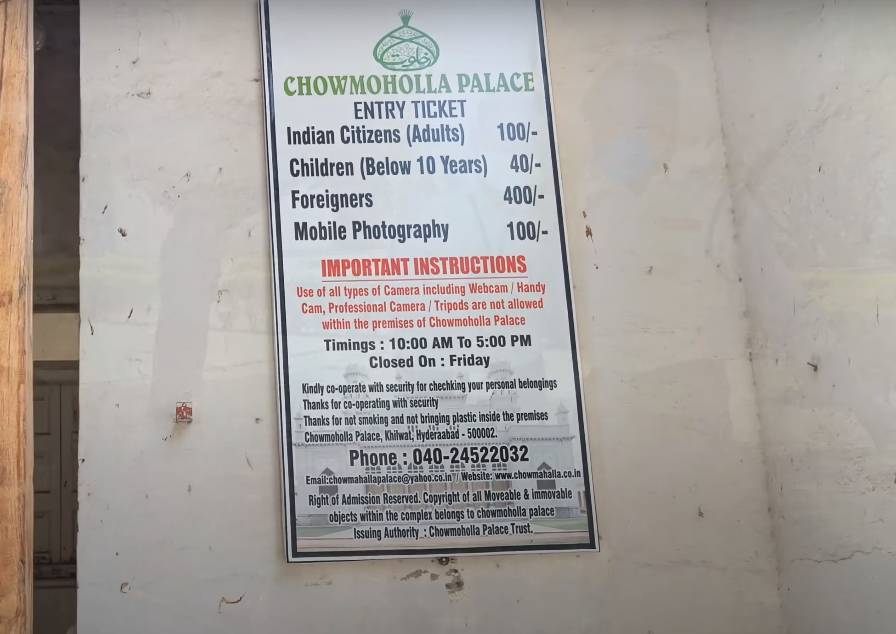
The timings of the palace are from 10:00 a.m. to 5:00 p.m. on all days except Fridays and national holidays. The ticket counter will close at 5:00 p.m. Visitors are requested to vacate the palace premises by 5:30 p.m. Shooting / Filming/ Videography is strictly prohibited within the premises of the Palace.
Visitors can buy tickets online or at the entrance gate of the palace. There are also some offers and discounts available for visitors, such as:
- Free entry for school children in uniform on the first Sunday of every month
- 20% discount for group bookings of more than 20 people
- 50% discount for senior citizens, physically challenged, and defense personnel
How to Reach Chowmahalla Palace?
Chowmahalla Palace is located at 20-4-236, Motigalli, Khilwat, Hyderabad, Telangana 500002, in the heart of Hyderabad’s Old City, close to the iconic Charminar (less than 1 km away). Its central location makes it easily accessible by various modes of transportation.
By Air
The nearest airport is Rajiv Gandhi International Airport, approximately 22 km from the palace. Taxis or private cars can be hired from the airport, with the journey taking about 30–45 minutes depending on traffic.
By Train
- Hyderabad Deccan Railway Station (Nampally): 3 km away, a 10–15 minute ride by taxi or auto-rickshaw.
- Yakutpura Railway Station (MMTS): 2 km away, ideal for local train travelers.
By Metro
The closest metro station is MG Bus Station (Gowliguda), 3.7 km from the palace. From there, auto-rickshaws or taxis are readily available.
By Bus
The Charminar Bus Station is a 10-minute walk from the palace. Multiple local buses connect to this stop from various parts of Hyderabad. Buses also stop directly opposite the palace’s main gate.
By Car or Taxi
Taxis and auto-rickshaws are abundant in Hyderabad’s Old City. From Charminar, follow the road to the right to reach the palace gate. Navigation apps like Google Maps can guide you, and locals are often happy to provide directions.
Parking
The palace offers ample parking within its compound, though spaces can fill up quickly, especially during peak hours. Arriving early is recommended to secure a spot.
Accessibility
Parts of the palace, such as the northern courtyard and the vintage car museum, are wheelchair-accessible. However, some areas, particularly the rear of the palace, have stairs, which may limit access. Visitors with wheelchairs should bring their own, as the palace may not provide them.
Visitor Amenities
- Restrooms: Clean and well-maintained restrooms are available for men and women.
- Canteen: A small canteen near the entrance offers snacks and drinks. Note that there are no full-service restaurants inside or nearby, so visitors should plan meals accordingly.
- Souvenir Shop: Located near the entrance, the shop sells decorative items, jewelry, artwork, and showpieces, perfect for mementos.
- Benches and Shade: Strategically placed benches under trees allow visitors to rest and enjoy the serene ambiance.
- Guided Tours: Hiring a guide is recommended for a deeper understanding of the palace’s history and architecture.
Tips for Visiting
To make the most of your visit to Chowmahalla Palace, consider the following tips:
Combine with a Tour: Consider booking a Hyderabad city tour package that includes Chowmahalla Palace, Falaknuma Palace, and Golconda Fort for a comprehensive exploration of the city’s heritage.
Plan Your Visit: Allocate 1.5–2 hours to explore the palace fully. Arrive early to avoid crowds and secure parking. Check the official website for any updates on timings or special events.
Best Time to Visit: The ideal time is between October and February, when Hyderabad’s weather is pleasant, and the palace’s gardens are in full bloom. Avoid visiting during the hot summer months (April–June) and carry a cap or umbrella for daytime visits.
Dress Appropriately: Wear comfortable walking shoes, as the palace grounds cover a large area with varied terrain (marble, grass, gravel). Dress conservatively, covering shoulders and knees, as a sign of respect. Light clothing is advisable due to Hyderabad’s warm climate.
Photography: Photography is allowed in most areas for an additional fee (INR 100). Tripods, DSLRs, and SLRs may not be permitted, and videography is strictly prohibited in certain sections, such as the Quran section.
Hire a Guide: A guide can provide detailed insights into the palace’s history, architecture, and the Nizams’ lifestyle, enhancing your experience.
Explore Nearby Attractions: The palace’s proximity to Charminar (1 km), Mecca Masjid, and Laad Bazaar makes it easy to combine your visit with other iconic Hyderabad landmarks. Plan a half-day itinerary to cover these sites.
Respect Palace Rules: Smoking, consuming alcohol, and bringing plastic or food for picnics are prohibited. Carry reusable water bottles and dispose of waste responsibly.
Explore other nearby attractions in Hyderabad, such as Charminar, Golconda Fort, Salar Jung Museum, etc. These are some of the iconic landmarks and markets of Hyderabad that reflect its history and culture.
Chowmahalla Palace is a must-visit attraction for anyone who wants to learn about Hyderabad’s rich heritage and legacy. The palace is a splendid example of the fusion of various architectural styles and influences, as well as the opulence and culture of the Nizams of Hyderabad. By visiting Chowmahalla Palace, you will get a glimpse of the grandeur and elegance of the past, as well as the beauty and glory of the present.
Don’t miss this opportunity to witness one of the most fascinating and beautiful attractions in Hyderabad. Visit Chowmahalla Palace today and experience the magic of history!
